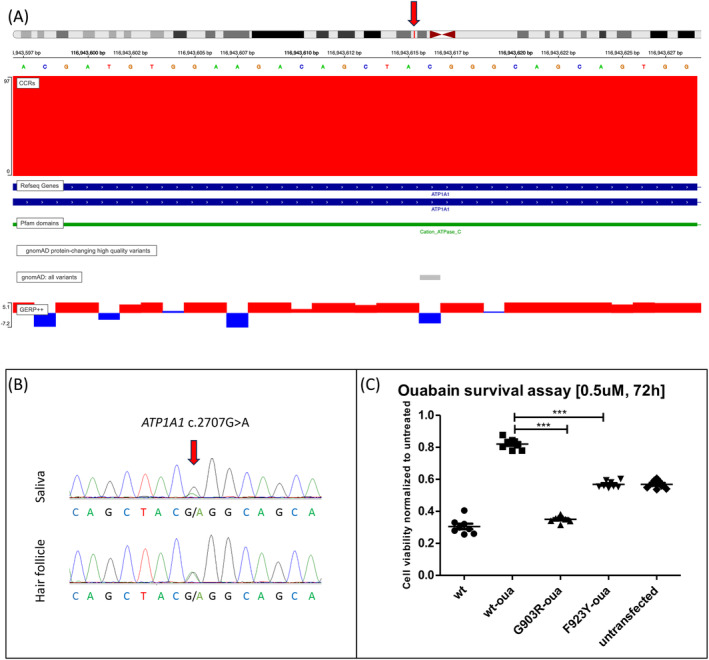Figure 1.

Genetic and experimental evidence for p.Gly903Arg pathogenicity. (A) Chromosomal position of the ATP1A1 variant c.2707G>A;(p.Gly903Arg) with its high regional constraint (CRR), high conservation (GERP), and absence from control databases (gnomAD). The red arrow indicates the variant's nucleotide position on chromosome 1. (B) Sanger sequencing shows c.2707G>A mosaicism in saliva and hair follicle in patient 1's unaffected mother. (C) HEK cells were transfected with ouabain‐insensitive ATP1A1 plasmids for mutant and wildtype (oua‐wt), as well as wt‐ATP1A1 (not ouabain‐insensitive) and treated with ouabain (0.5 μmol/L) for 72 h. Cell viability was measured in replicates of eight, using the luminescence‐based CellTiterGlo assay. Ratios are shown in comparison with untreated cells (mean) transfected with the same plasmid. Statistics: one‐way ANOVA, α‐error correction: Tukey's post‐test. ***P < 0.0001
